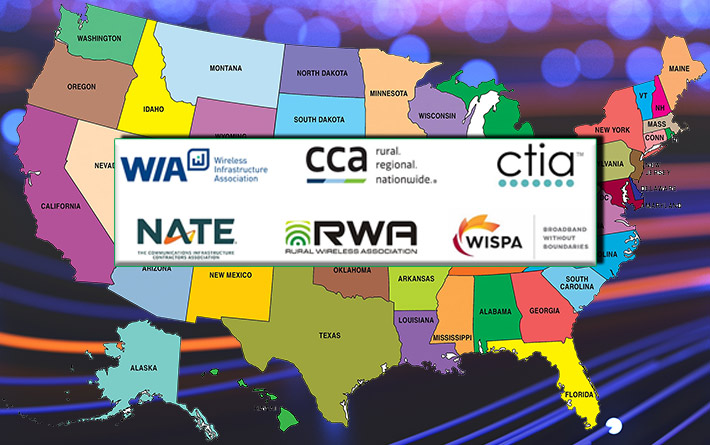
Now, foremost companies representing the wireless industry sent letters to broadband offices in all US states and territories, urging them to permit for highest flexibility in choosing the suitable mix of broadband systems to meet up with their plan ambitions with Broadband Fairness, Access, and Deployment (BEAD) cash.
Below the BEAD Discover of Funding Prospect (NOFO), states and territories are needed to set an “Extremely Higher Charge For every Location Threshold” (EHCT). Per the NOFO, as prolonged as a state gets a fiber proposal with a per spot cost down below this threshold, the point out should find it more than a non-fiber choice, irrespective of the value differential and other concerns.
In the letters, the Wi-fi Infrastructure Association (WIA), Competitive Carriers Association (CCA), CTIA, NATE, Rural Wireless Association (RWA), and WISPA encouraged states and territories to established a adequately very low EHCT, which would permit broadband workplaces increased versatility to select in between distinctive technologies in the course of job setting up, as an alternative of getting locked into selecting fiber.
“Whatever a state’s priority, it need to not tie its fingers at the outset by forcing the acceptance of very higher-cost fiber assignments that will avert money from currently being expended on any other precedence for connectivity,” the letters condition. By location a sufficiently low EHCT, states would enable on their own the means to contemplate other systems for funding in addition to fiber, like Mounted Wi-fi Accessibility (FWA)—one of the fastest rising, substantial-speed, trustworthy, and fast-to-deploy broadband alternatives on the industry.
“Sound plan conclusions at the BEAD method structure stage are essential for states to give them selves the flexibility to pick out the proper mix of technology, which includes fastened wireless solutions, to competently close the digital divide,” reported WIA President and CEO Patrick Halley.
“The fact is that wireless is in many cases the speediest, most economical, and most value-productive way to carry connectivity to rural and non-urban spots,” stated CCA President and CEO Steven K. Berry. “Strategically environment EHCTs will preserve State flexibility to optimize use of BEAD funding. There is wide assistance in favor of highest flexibility in deciding upon the proper mix of broadband systems it is commonsense policy that will gain Us residents throughout the region.”
“NATE is pleased to join with WIA and other main marketplace businesses in highlighting our collective concerns about the ‘Extremely Higher Cost For each Locale Threshold’ and advocating that the successful, economical deployment of broadband resources as a result of the IIJA’s BEAD Plan, as a means of bringing connectivity to all regions of the state, have to by necessity be technological innovation neutral,” reported NATE President and CEO Todd Schlekeway. “All accessible assets should be viewed as to obtain the national aims of increasing broadband and closing the electronic divide, particularly if broadband is to achieve rural areas as well as geographically challenging regions, in an productive and cost-efficient method.”
“Given rural America’s numerous topography, Congress acknowledged that wireless technologies has to be aspect of the option,” noted Carri Bennet, RWA’s Standard Counsel.
“FWA, whether employing accredited or unlicensed spectrum or in mixture, is responsible broadband,” explained David Zumwalt, WISPA President and CEO. “States must use their discretion to set an EHCT at a level that expands their accessibility to as a lot of resources as necessary, and in as quite a few destinations as feasible, to connect individuals in their states however dwelling on the completely wrong aspect of the electronic divide.”